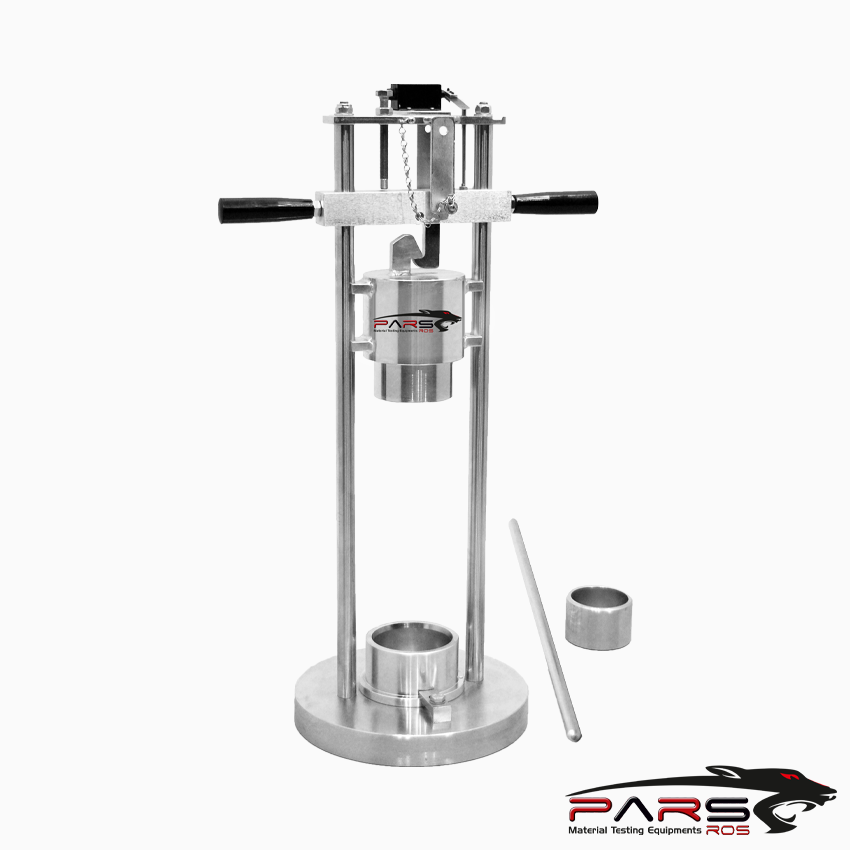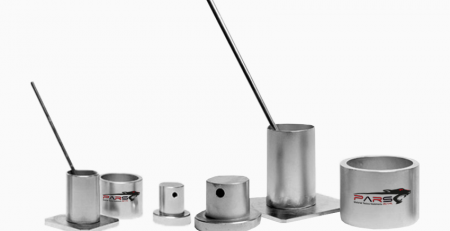Aggregate Impact Value Test Apparatus
Aggregate Impact Value Test Apparatus, Procedure and Uses
Due to movement of vehicle on the road the aggregates are subjected to impact resulting in their breaking down into smaller pieces.
The aggregates should therefore have sufficient toughness to resist their disintegration on due to impact.
This characteristics is measured by impact value test.
The aggregate impact value is a determining measure of resistance to sudden impact or shock, which may differ from its resistance to gradually applied compressive load.
Uses of the test
To determine the impact value of the aggregates used in pavement construction(Road);
To assess their suitability in road layers (base course, surface course ) construction on the basis of impact value.
Apparatus used in Impact test
The apparatus of the aggregate impact value test consists of:
A testing machine weighing 45 to 60 kg and having a metal base with a plane lower surface of not less than 30 cm in diameter.
https://www.parsros.net/urun/aggregate-impact-value-aiv-testing-apparatus/
Level and plane concrete floor of minimum 45 cm thickness are used to support it.
The base of the machine should also have provisions for fixing its base.
A cylindrical steel cup of internal diameter 102 mm, depth 50 mm and minimum thickness 6.3 mm.
A metal hammer or tup weighting 13.5 to 14.0 kg the lower end is cylindrical in shape, is 50 mm long, 100.0 mm in diameter, with a 2 mm chamfer at the lower edge
and case hardened.
The hammer is arranged in such a way that it should slide freely between vertical guides and be concentric with the cup.
It is arranged that the free fall of the hammer should be within 380±5 mm.
A cylindrical metal measure having an internal diameter of 75 mm and depth 50 mm for measuring aggregates.
One end rounded tamping rod 10 mm in diameter and 230 mm long.
balance of capacity not less than 500 g, and readable and accurate up to 0.1 g.
Procedure of Aggregate Impact value test
The test sample: normally aggregates sized 10.0 mm to 12.5 mm. the aggregates should be dried by heating at 100-110 0C for a period of 4 hours and cooled.
Sieve the material through 12.5mm and 10.0 mm IS sieves.
The aggregates passing through 12.5 mm sieve comprises the test material.
Then, just 1/3 rd depth of measuring cylinder is filled by aggregate by pouring.
Compact the material by giving 25 gentle blows with the rounded end of the tamping rod in the cylinder.
Two more layers are added in a similar manner, to make cylinder full.
Strike off the surplus aggregates.
Determine the net weight of the aggregates to the nearest gram (W1).
Bring the impact machine to rest without wedging or packing upon the level plate, block or floor, so that it is rigid and hammer guide columns are vertical.
25 gentle strokes with tamping rod are used to compact the test sample by fixing the cup firmly in position on the base of the machine with placing the whole of
the test sample in it.
After that raise the hammer until its lower face is 380 mm above the surface of the aggregate in the cup and allow it to fall freely on the aggregate sample.
15 such blows at an interval of not less than one second between successive falls are acted on it.
Remove the crushed aggregate from the cup and sieve it through 2.36 mm IS sieves until no further significant amount passes in one minute.
Weight the fraction passing the sieve to an accuracy of 1 gm (W2).
The fraction retained in the sieve is weighted.
Note down the obversations in the proforma and compute the aggregate impact value. The ‘Aggregate Impact Value’ is the mean of two observations, rounded to
a nearest whole number.
Precautions
Place the plunger centrally so that it falls directly on the aggregate sample and does not touch the wall of the cylinder in order to ensure that the entire load is
transmitted on the aggregates.
In the operation of sieving the aggregates through 2.36 mm sieve, the sum of weights of fractions retained and passing the sieve should not differ from the original weight of
the specimen by more than 1 gm.
The tamping is to be done properly by gently dropping the tamping rod and not by hammering action.
Also, the tamping should be uniform over the surface of the aggregate taking care taking care that the tamping rod does not frequently strike against the wall of the mold.
| Reading | Sample I | Sample II |
| Total weight of dry sample taken = W1 gm | ||
| Weight of portion passing 2.36 mm sieve = W2 gm | ||
| Aggregate impact value = (W2 / W1 )*100 percent | ||
| Aggregate impact mean value = |
Interpretation of Results
Aggregate impact value is used to classify the stones in respect of their toughness property that is shown in table below :
| Aggregate Impact value | Classification |
| <10 % | Exceptionally strong |
| 10-20% | Strong |
| 10-30% | Satisfactory for road surfacing |
| >35% | Weak for road surfacing |
The following Aggregate Impact values for different types of road construction is recommended by IRC.
| S.N. | Types of pavement | Maximum aggregate impact value |
| 1. | Bituminous surface dressing penetration macadam, bituminous carpet concrete and cement concrete wearing course. | 30 |
| 2. | Bitumen-bound-macadam, base course | 35 |
| 3. | WBM base course with bitumen surfacing | 40 |
| 4. | Cement Concrete base course |






Leave a Reply